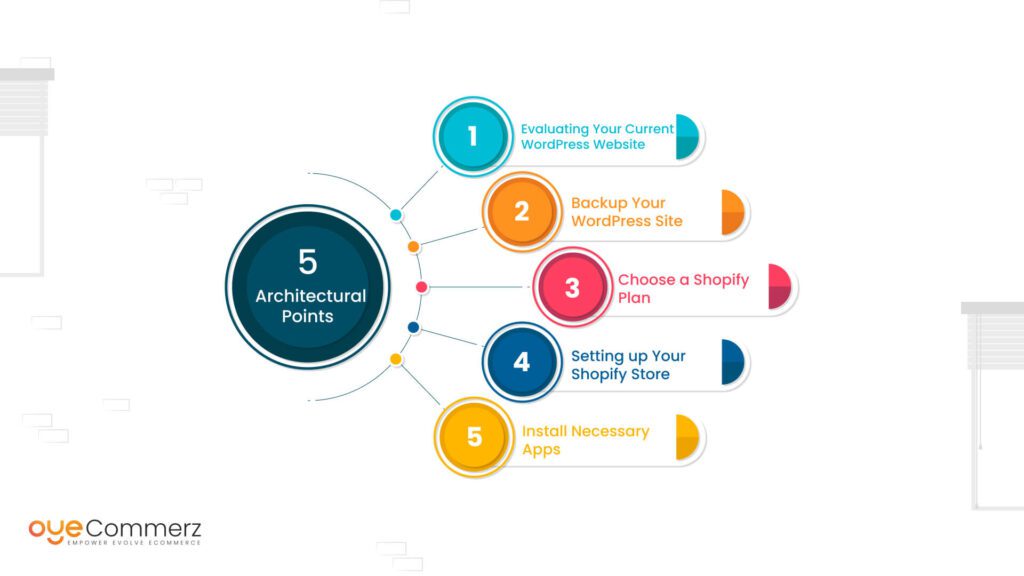Transitioning from WP to Shopify marks an exciting step toward optimizing your e-commerce operations. As businesses grow, choosing a platform that supports scalability, UX, and customization becomes crucial. Shopify has emerged as a favorite for e-commerce professionals, providing superior adaptability, security, and ease of use. In this guide, we’ll explore why this migration is a game-changer, discuss the advantages, and share actionable steps to facilitate a smooth move.
1. Why Migrate from WP to Shopify?
The combination of WordPress and WooCommerce, continues to support countless e-commerce platforms. However, as companies scale, challenges like plugin dependency, security vulnerabilities, and complex setups can hinder progress. Shopify, designed explicitly for digital retail, addresses these issues with an all-in-one, intuitive platform. Real data supports this transition—Shopify hosts over 4.4 million websites globally, with a reported 10% boost to sales performance for numerous merchants post-switch.
2. Shopify's Perks for Thriving Online Stores
Shopify’s robust ecosystem is tailored for expanding businesses. Its notable benefits include:
- Seamless Customization: Shopify offers over 80 expertly crafted themes.
- Built-in Features: Capabilities such as Shopify Payments and integrated SEO save time and effort.
- International Expansion: Currency versatility and localization features empower brands to reach global markets.
Additionally, Shopify boasts an uptime rate of 99.98%, guaranteeing your store remains accessible.
3. Preparing for WP to Shopify Migration
Prior to starting the migration process, evaluate your existing setup. Analyze inventory details, customer details, and search engine rankings. Resources such as Shopify’s Migration Kit or third-party solutions help ease the transition. Develop a comprehensive plan, making sure all assets—item details, media files, and articles—are optimized for transfer.
4. Data Migration: A Critical Step
Data migration is a cornerstone of a successful platform switch. When moving from WP to Shopify, prioritize:
- Inventory Details: SKU, descriptions, and categories.
- Customer Data: Emails, order history, and custom fields.
- Search Engine Considerations: Retain meta tags, URLs, and forwarding paths to maintain search rankings.
Use tools such as LitExtension to facilitate seamless migration while reducing mistakes.
5. Tailoring Your Shopify Store to Fit Your Brand
After the move, customizing your Shopify store ensures it reflects your business identity. Take advantage of Shopify’s drag-and-drop editor to design E-commerce platform migration pages effortlessly. Shopify's themes are mobile-responsive, providing a seamless user experience across devices—a critical factor, since 74% of e-commerce traffic comes from mobile users.
6. Maintaining SEO During Migration
SEO is vital for preserving your visibility during migration. Shopify is highly optimized for search engines with organized link formatting, built-in optimization tools, and seamless blog integration. Ensure:
- Set up URL forwarding for existing links.
- Optimize new pages with targeted phrases.
- Use Shopify's apps Plug in SEO to monitor performance post-migration.
7. Essential Tests After Migrating to Shopify
Once the migration is complete, conduct thorough testing.
Review: - Website speed (Shopify delivers faster speeds compared to WP).
- Payment integration reliability and checkout processes.
- Adaptability across devices.
Quality assurance guarantees your store delivers a seamless shopping journey from the start.
8. Case Study of a Successful Migration
An example of effective platform switching is Gymshark, a fitness apparel brand that moved to Shopify. Post-migration, the company saw a 60% increase in mobile sales and significantly lowered site downtime. This showcases the potential of Shopify in driving online business success.
9. Challenges and Solutions
Migration is not without obstacles, such as data integrity and adjusting tailored features. However, Shopify’s robust support and third-party experts simplify the process. Partnering with experienced Shopify developers helps guarantee a smooth transition.
10. Starting Your Journey with Shopify
Migrating from WP to Shopify represents a strategic approach to online retail. By addressing scalability, streamlining operations, and improving buyer satisfaction, Shopify empowers businesses to succeed in competitive markets.
Final Thoughts
Switching from WordPress to Shopify offers a smart solution that can significantly boost your online business performance. With a robust migration plan, the right tools, and professional guidance, you can unlock new growth opportunities.
Ready to make Data migration to Shopify the leap? Reach out today to learn how our Shopify migration services can revolutionize your e-commerce platform. Get in touch today, or ask yourself: Is it time to seize Shopify’s advantages for your store?
